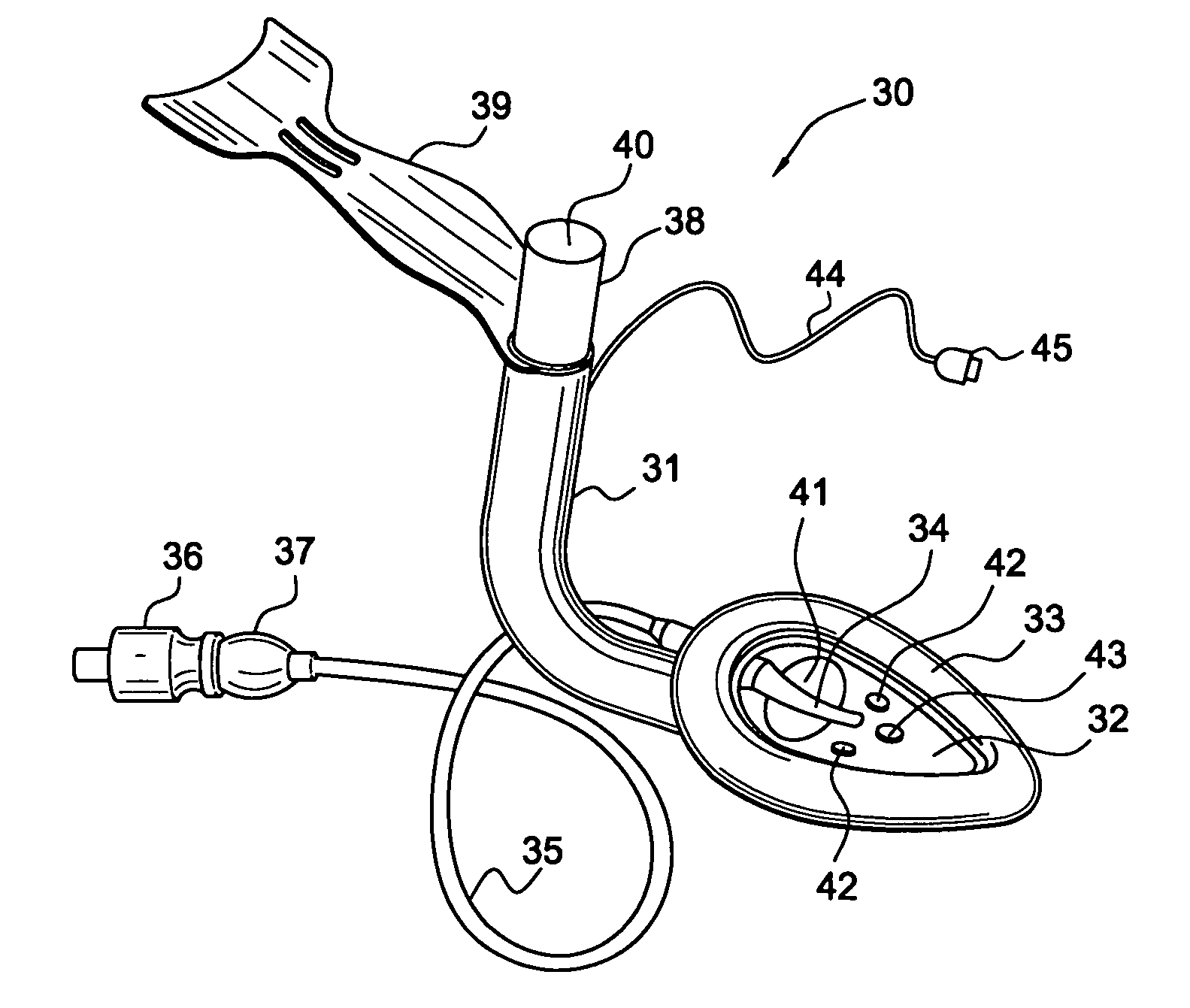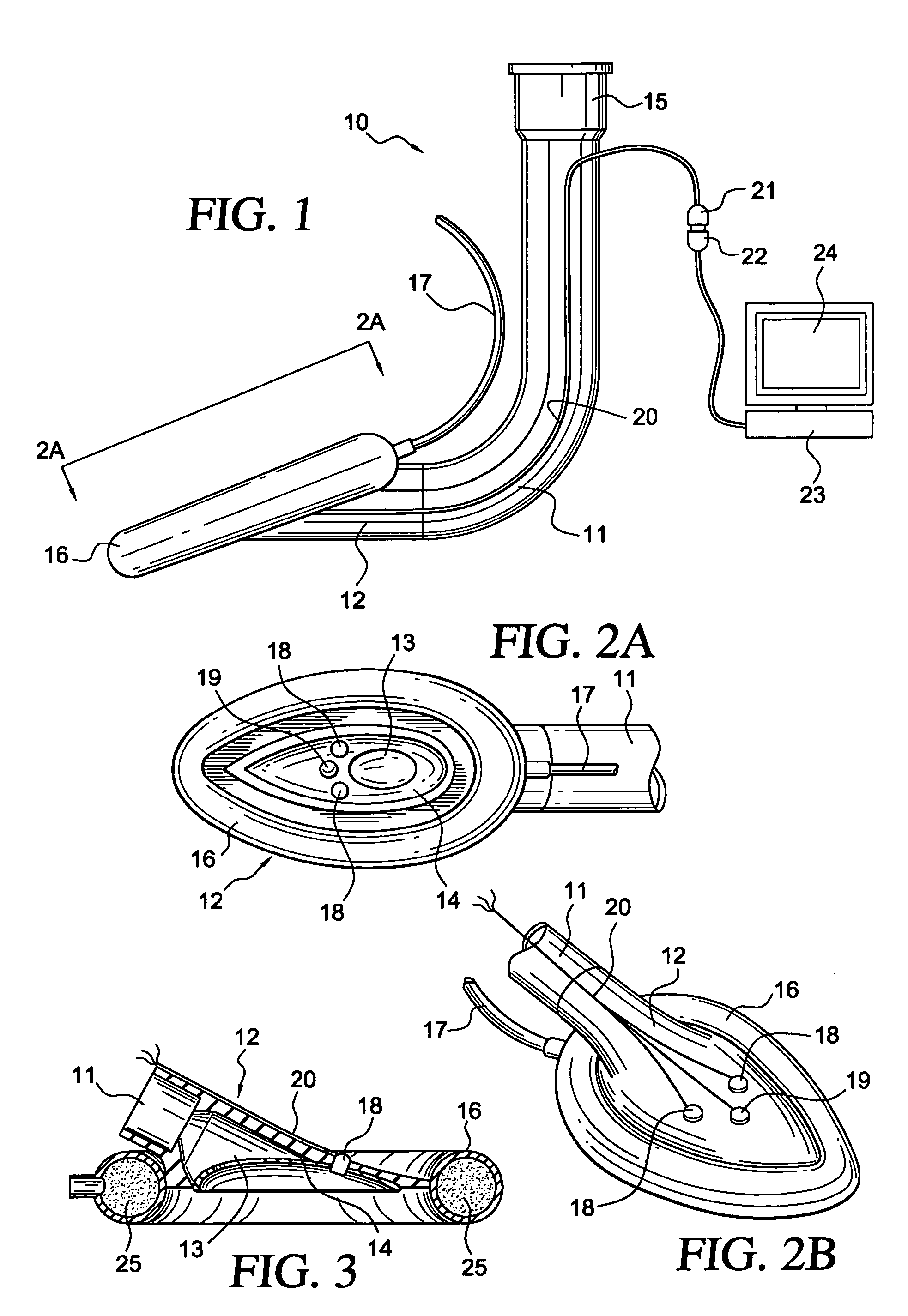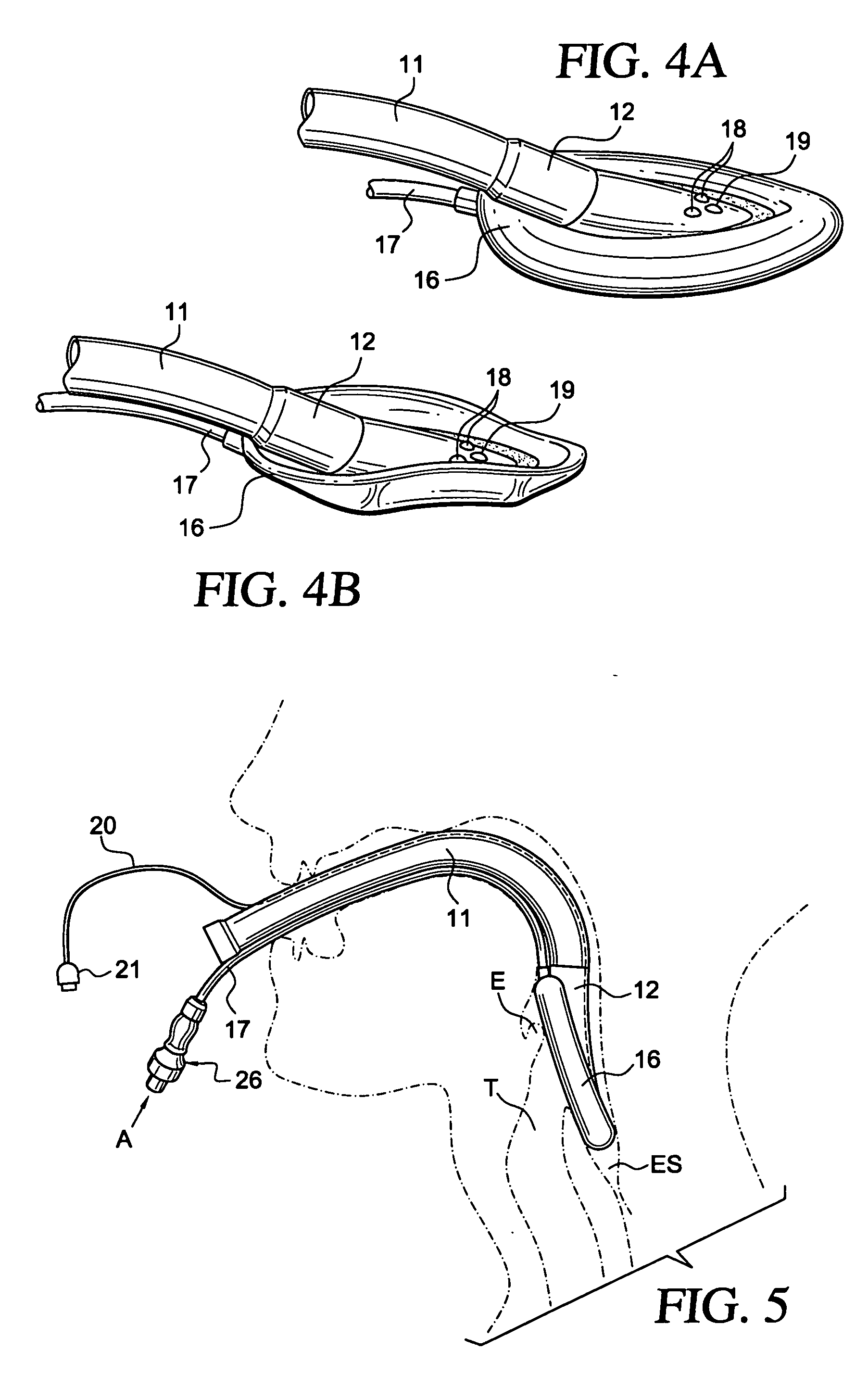Video-assisted laryngeal mask airway devices
a technology of laryngeal mask and airway device, which is applied in the field of laryngeal mask airway device, can solve the problems of not protecting against the risks of regurgitation and aspiration, inability to intubate the trachea, and possible gastric acid soiling of the lungs
- Summary
- Abstract
- Description
- Claims
- Application Information
AI Technical Summary
Benefits of technology
Problems solved by technology
Method used
Image
Examples
Embodiment Construction
[0033] In accordance with the principles of the present invention, a video laryngeal mask airway (“LMA”) device is provided to facilitate lung ventilation in an unconscious patient, comprising an airway tube and a mask attached to an end of the airway tube. The mask communicates with the airway tube and includes a peripheral cuff having a roughly elliptical shape that is configured to conform to and readily fit within the space behind the larynx. In this manner, the cuff forms a seal around the circumference of the laryngeal inlet without the device penetrating into the interior of the larynx. In accordance with the present invention, the mask carries at least one video sensor having a field of view that encompasses the laryngeal inlet when the mask is inserted into the patient's airway. The LMA device, which may be configured as either an LMA or ILM, preferably is disposed of after a single use. Alternatively, the LMA device may have the video sensors oriented within the mask porti...
PUM
 Login to View More
Login to View More Abstract
Description
Claims
Application Information
 Login to View More
Login to View More - R&D
- Intellectual Property
- Life Sciences
- Materials
- Tech Scout
- Unparalleled Data Quality
- Higher Quality Content
- 60% Fewer Hallucinations
Browse by: Latest US Patents, China's latest patents, Technical Efficacy Thesaurus, Application Domain, Technology Topic, Popular Technical Reports.
© 2025 PatSnap. All rights reserved.Legal|Privacy policy|Modern Slavery Act Transparency Statement|Sitemap|About US| Contact US: help@patsnap.com



